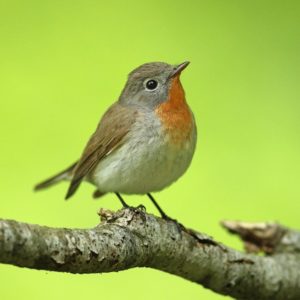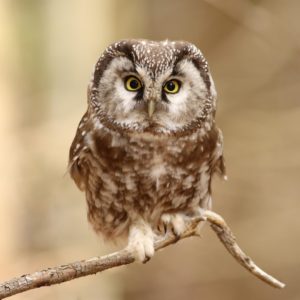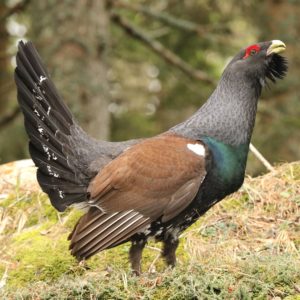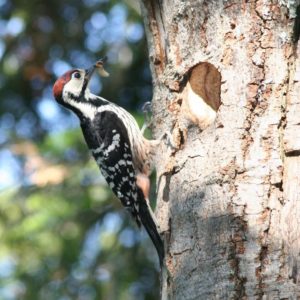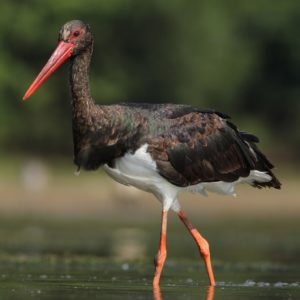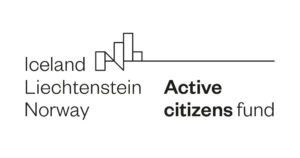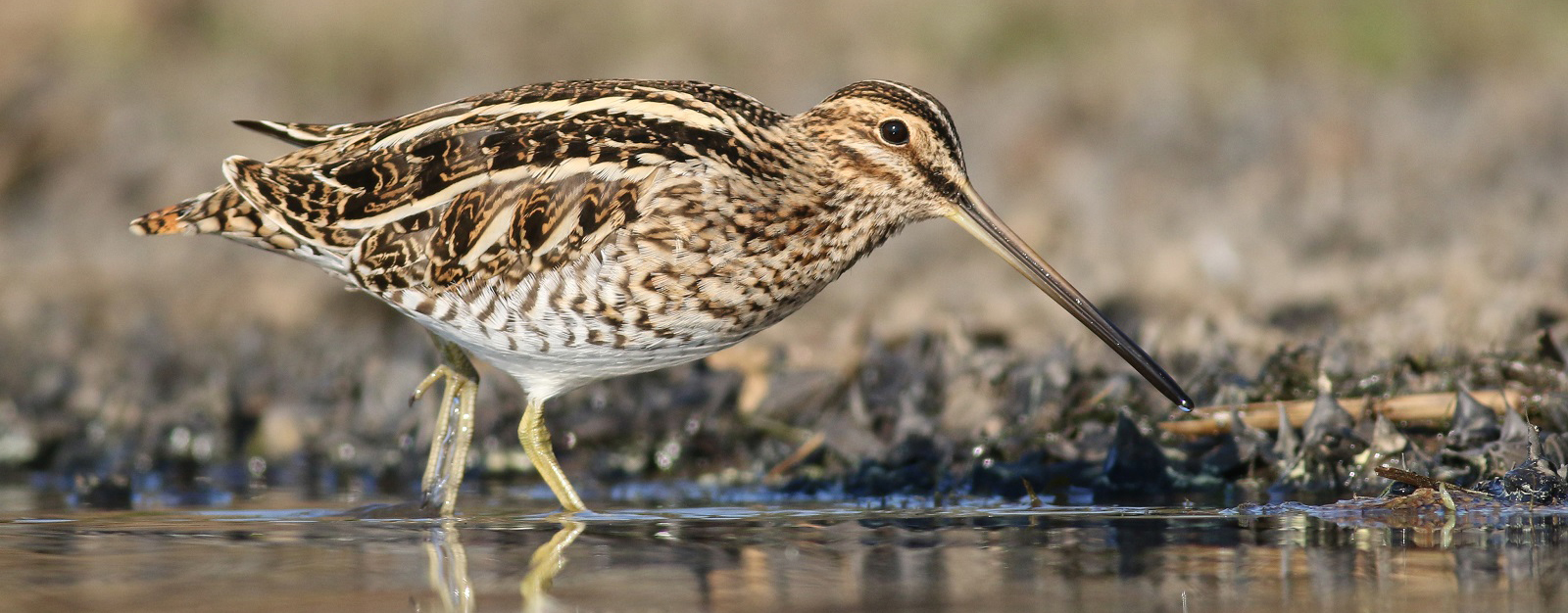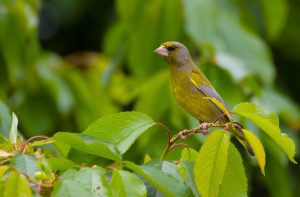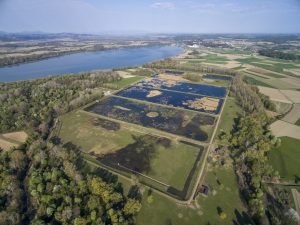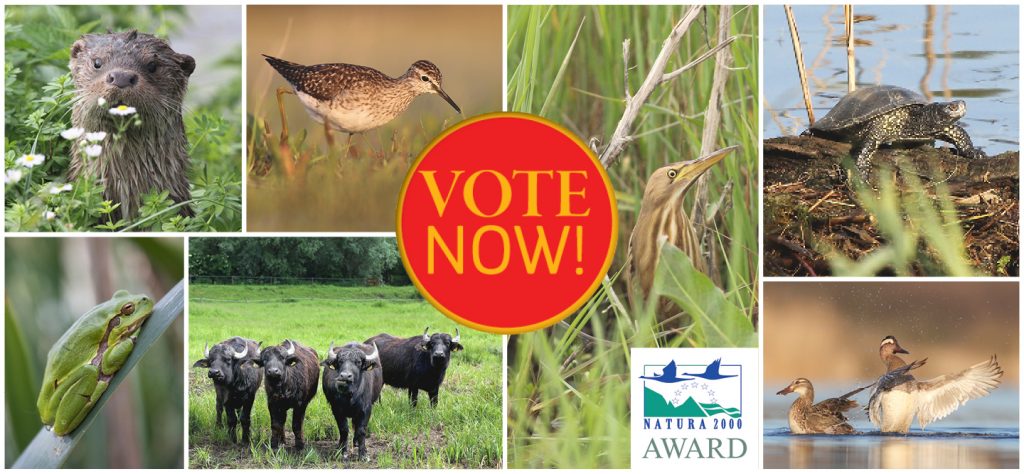In July earlier this year we equipped, in the White Stork’s nest at Matena near Ljubljana, two chicks with GPS tracking device and began to monitor their migration journey. In cooperation with the wider public, the company Electro Ljubljana, which financially supported the project, named the two young storks Srečko and Bela. After the initial joint local flights, their paths separated on 20 August and the storks continued their long and dangerous flight separately towards Africa. Bela chose the characteristic route across the Balkans to the Near East and landed in the south of the Sinai Peninsula. Srečko, on the other hand, surprisingly opted for the route across Italy to Tunisia where, however, he met with dire trouble. At the end of September we decided to travel to Tunisia to explore his fate.
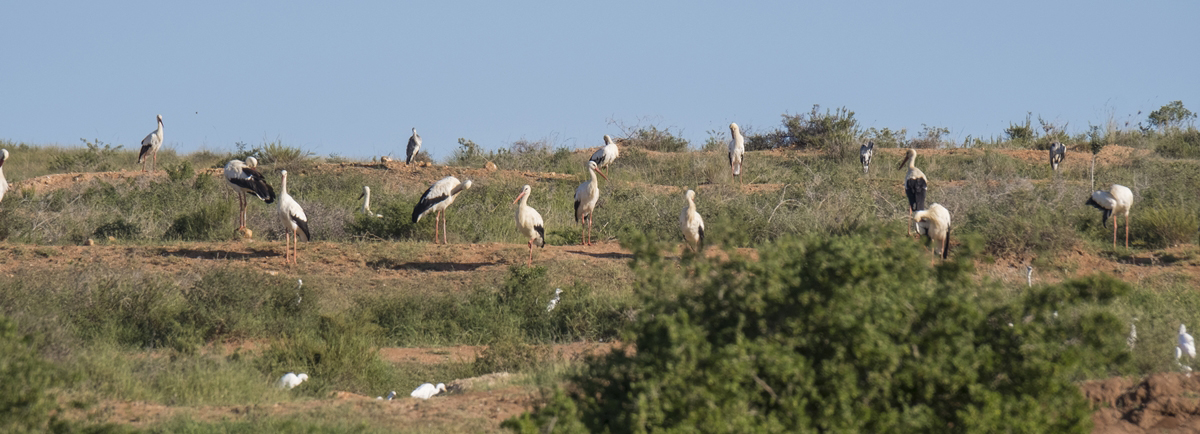
Storks at the slaughterhouse waste landfill. Many of them probably knew Srečko. Photo: Tilen Basle
Srečko in trouble
Srečko crossed the Mediterranean Sea on 30 August and landed about 80 kilometres east of Tunis, the capital of Tunisia. A day later he moved south towards the town of Enfida and settled there. On the basis of satellite images we were able to establish that he spent most of his time in extensive olive groves, occasionally visiting the nearby wetlands. On 12 September morning we began to receive data from Srečko’s transmitter, which persistently pointed at the same locality – a cause for major concern. We contacted the local ornithological association, but were informed that Srečko could not be located by them. At the end of the month we and Electro Ljubljana decided to travel to Tunisia to explore the circumstances that led our bird to such a sad end. On Saturday 28 September in the morning, two conservation ornithologists of DOPPS-BirdLife Slovenia boarded a plane for Tunisia.
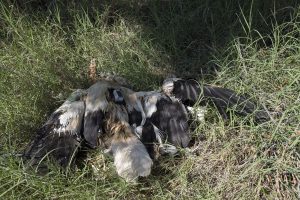
Srečko with transmitter under an olive tree. Photo: Tilen Basle
Soon after landing in Tunisia, Alen and Tilen indeed found Srečko’s corpse north of Enfida. Srečko met his sad death under a tree in the vast olive grove. They removed the GPS tracking device and a plastic ring from him and decided to explore the immediate surroundings. No visible signs of injuries could be seen on the corpse, but there were several pieces of plastic bag strewn on the ground all around it. From the gathered data we presumed that Srečko got entangled in a plastic bag and died. No traces of plastic could be found in his digestive tract, but there was quite some plumage in it, which attracted no special attention.
What did Srečko do in Tunisia?
In the ensuing three days, Alen and Tilen explored the areas frequented by Srečko during his stay in Tunisia. They headed for Lake Kelbia, which had also been visited by Srečko a day before his fatal accident. At that time of the year, this brackish lake hosts thousands of waders, particularly flamingos, avocets and sandpipers.
Srečko also made a few visits to a small freshwater lake in the vicinity of the prominent village of Takroun, where he was most probably searching for food. During their visit, our two ornithologists were able to observe huge flocks of White-headed Ducks, Ferruginous Ducks, Garganeys and other ducks.
In spite of it all, the greatest surprise was waiting for them on their last day in Tunisia. They thoroughly explored the two areas visited by Srečko every single day during his stay in Tunisia. The first area, an olive grove approximately 2 kilometres north of the spot where Srečko was found dead, hosted 30 White Storks and several hundred Cattle Egrets and Ravens. They soon discovered what in fact attracted the birds to this habitat, so unusual for these birds: slaughterhouse waste landfill! In the waste, remains of poultry prevailed, from where the plumage found in Srečko’s stomach most probably originated. The storks observed at this spot most likely belonged to the permanent population that spends a whole year in the vicinity of Enfida. In the evenings, the storks headed for the town’s neighbourhood, where they slept on electricity pylons and transmitters.
The other area regularly visited by Srečko was an olive grove about a kilometre and a half east of the spot of his death. Here they found a pylon, where Srečko slept each night. The latter was also confirmed by the time record on the data of the spots provided by the tracking device.
What exactly happened to Srečko?
Precise circumstances of Srečko’s death shall never be known, but we can claim with all certainty that Srečko was feeding most of his time in the company of other storks at the slaughterhouse waste landfill in the vicinity of Enfida, where he also slept on an electricity pylon. The circumstances from the spot of his death indicate that he got entangled in a plastic bag, thousands of which lie strewn in this area, particularly at the landfill, where Srečko was feeding. It is also possible, however, that Srečko was killed by poisoned or infected food at the landfill, but in view of the circumstances this would be difficult to determine with the utmost certainty.
Bela is still at Sharm el Sheik
Bela, which followed the eastern migration route, is now in the vicinity of the Sharm el Sheikh resort in Egypt, where she has resided for quite a while. In the company of other White Storks she has been feeding at a wastewater-collection point, which is the only water body in the area. Unfortunately, the quality of water in the basins is extremely low, for each year numerous deaths of storks and other birds are reported from there. As indicated but the data on the research carried out so far, the southern part of the Sinai Peninsula is a blind migration route, as birds only exceptionally continue their flight to Africa. Bela will be most probably forced to stay in the area until next spring, and it can only be hoped that she will safely return home.
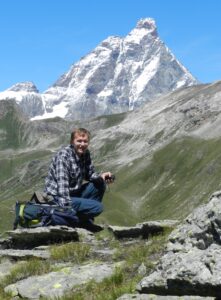 If you ever visited the society’s office in Ljubljana, you most likely didn’t meet Primož. When he wasn’t out in the field, he was in his office—the most hidden of them all, one you’d hardly ever stumble into by accident. The shelves in his office held a few binders, but mostly professional literature, including books that we all knew could only be found there. Of course, “Bibby”—Bird Census Techniques—was there, and bookmarks were mostly placed in titles like Habitat Suitability and Distribution Models or Exploratory Multivariate Analysis by Example Using R. These titles alone show that Primož was a great expert; he knew a lot about topics the rest of us barely understood.
If you ever visited the society’s office in Ljubljana, you most likely didn’t meet Primož. When he wasn’t out in the field, he was in his office—the most hidden of them all, one you’d hardly ever stumble into by accident. The shelves in his office held a few binders, but mostly professional literature, including books that we all knew could only be found there. Of course, “Bibby”—Bird Census Techniques—was there, and bookmarks were mostly placed in titles like Habitat Suitability and Distribution Models or Exploratory Multivariate Analysis by Example Using R. These titles alone show that Primož was a great expert; he knew a lot about topics the rest of us barely understood.
